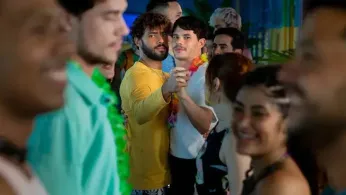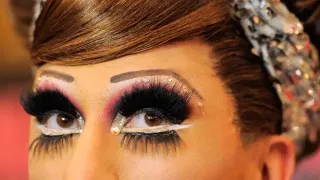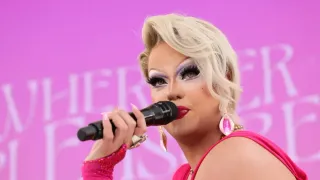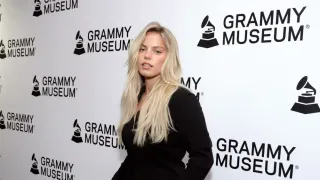
6 hours ago
Allan Deberton’s “The Best Friend” Illuminates Queer Longing and Brazilian Joy
READ TIME: 3 MIN.
In the colorful landscape of contemporary queer cinema, Allan Deberton’s “The Best Friend” (“O Melhor Amigo”) emerges as a heartfelt and joyous celebration of queer longing, friendship, and the unique spirit of Brazil’s northeast. Released in 2024 and already making its mark in international festivals, this musical romantic comedy has quickly become a touchstone for inclusive, affirming storytelling focused on gay men’s experiences in Brazil’s vibrant cultural milieu .
“The Best Friend” centers on Lucas and Felipe, two childhood friends who, after five years apart, find themselves reunited on the sun-drenched beaches of Canoa Quebrada. Their time apart has changed them, but the bond they share resurfaces with an intensity that neither is prepared to face. As old feelings bubble up, the film delicately explores the tension between friendship and romantic desire, a theme with deep resonance in queer storytelling .
The narrative unfolds through musical numbers, comedic moments, and reflective scenes, allowing both characters to grapple with vulnerability and courage. The film’s tone is infused with the “carisma natural” of Ceará, capturing the warmth and humor of the region and its people .
A distinguishing feature of “The Best Friend” is its embrace of musical elements that are both entertaining and emotionally revealing. The film’s soundtrack, featuring local rhythms and original songs, punctuates key moments, elevating the narrative and offering a distinctly queer Brazilian sensibility. The musical format enables the characters to express the complexity of their emotions in ways that transcend dialogue, connecting with audiences on both a personal and cultural level .
The setting of Canoa Quebrada—a coastal town renowned for its beauty and bohemian energy—serves as more than a backdrop; it is integral to the film’s mood and message. The sun, sand, and music create a space where the characters can explore their true selves, away from the pressures of daily life and heteronormative expectations.
Beyond its lighthearted surface, “The Best Friend” engages with the nuanced realities of queer life in Brazil. The film’s portrayal of desire between men, the fear of coming out, and the challenges of articulating queer love reflect the lived experiences of many viewers. Director Allan Deberton is known for his commitment to authentic queer storytelling, and his latest work continues that legacy, offering representation that is joyful, flawed, and deeply human .
Brazil, while home to a vibrant queer community, continues to grapple with social and political challenges facing queer people. By centering gay characters in a positive, affirming narrative, “The Best Friend” contributes to broader efforts to normalize and celebrate diverse experiences within Brazilian media. The film’s release in partnership with leading industry players—including Telecine, Globo, and international studios—underscores its reach and significance .
Since its release, “The Best Friend” has received favorable reviews for its charm, humor, and heartfelt performances. Critics have noted the film’s ability to balance comedic exaggeration with genuine emotional depth. While some reviewers have pointed out moments of lighthearted excess, the consensus is that these elements are in keeping with the musical comedy genre and serve to accentuate the film’s infectious optimism .
The performances of Gabriel Fuentes and Diego Montez have been highlighted for their chemistry and authenticity, supported by a strong ensemble cast that includes Claudia Ohana and Gretchen. The film’s visual style, characterized by warm colors and lively cinematography, further enhances its mood of celebration and self-discovery .
“The Best Friend” stands as a testament to the growing visibility and sophistication of queer narratives in Latin American cinema. Following Allan Deberton’s earlier successes, including the acclaimed “Pacarrete,” his latest film signals a continued evolution of queer storytelling—one that is unapologetically joyful, musically inventive, and rooted in local culture .






